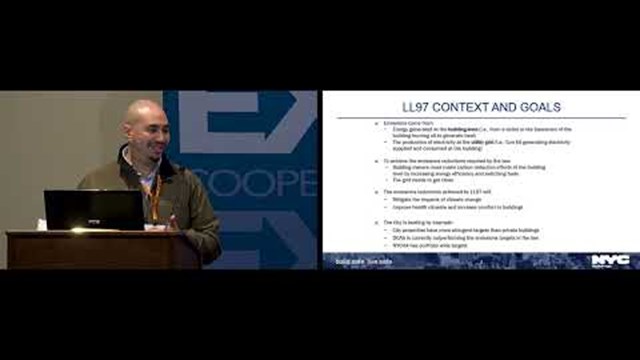
Little by little, the world seems to be getting greener, and the Bloomberg administration has made greening the city one of its priorities in helping to reduce New York City’s carbon footprint. As part of Mayor Michael R. Bloomberg’s Greener, Greater Buildings Plan, all of the city’s private buildings—including most co-ops and condos—of over 50,000 square feet are required to obtain benchmarking and energy audits by a certain deadline.
"Buildings account for 75 percent of all greenhouse gas emissions in New York City, yet many property owners and managers do not know they can be a part of the solution and save money by making their buildings more energy efficient," said Mayor Bloomberg in a statement. "This benchmarking report will help us understand where we can act most quickly to significantly reduce greenhouse gas emissions and achieve our PlaNYC goals."
City Council Speaker Christine C. Quinn agrees, adding that "this benchmarking law is a significant piece of our environment portfolio and is the largest effort in the country to measure energy and water usage.”
New Local Laws
One of the major goals of PlaNYC is to reduce the city's greenhouse gas (GHG) emissions by 30% by 2017. According to the report summary, “We have analyzed the energy used by different sectors and we can see how...multifamily buildings and office buildings dominate New York City’s energy profile. Using this revelation, we have been able to estimate the potential for cost-effective citywide energy reductions.”
In order to meet the city’s goals, an array of local laws have been implemented, spelling out the steps buildings must take to reduce their energy consumption. Local Law 84 requires yearly benchmarking of energy and water usage; Local Law 85—the New York City Energy Conservation Code—establishes new, more stringent efficiency standards that apply both to renovations and new construction; Local Law 87 requires regular American Society of Heating, Refrigerating and Air Conditioning Engineers (ASHRAE) Level II energy audits, as well as retro-commissioning of base building systems as needed; and finally, Local Law 88 requires that lighting in commercial buildings be upgraded for energy efficiency and that submeters be installed in tenant spaces.
Compliance vs. Resistance
According to the PlaNYC report, compliance rates from Local Law 84 vary across the five boroughs, with Manhattan coming in first on the scoreboard with 83%, Queens with 72%, The Bronx close behind with 71%, Brooklyn with 69%, and Staten Island coming in last at 39% compliance.
According to Matthew Rubenstein, vice president of technology for Fresh Meadows-based U.S. Energy Group, despite the variance between boroughs, interest in and compliance with the new standards has been very encouraging.
According to George Crawford, a principal with NYG Green Partners, a Manhattan-based energy consulting firm, a big part of why compliance with the new standards has been so good is that the mayor’s office has made a concerted effort to reach out to building owners and property managers through letters and informational seminars.
“New York City claims over 70% compliance rate with this law,” says Rubenstein. “That level of compliance with any new law of this scope is extraordinary. But, this law is unusual as it is being implemented by experts in benchmarking,” he notes, with dozens of high-profile energy companies and engineering firms offering their consulting expertise to buildings wishing to improve their energy profile.
Initially, the real estate industry—including co-ops and condos—had mixed reservations about the new standards, mostly related to cost. “At first,” Rubenstein says, “many owners and managers were not sure if the law would really remain in force, and were concerned only about compliance, while finding any excuse to resist.”
In some cases, residential building owners and administrators seem more interested in the results than in going through the process required to achieve them. “It's surprising that 30% did not comply, since benchmarking results aid in reducing energy costs,” he says. But the numbers are improving; “Now, it is business as usual—and it’s just the right thing to do.”
Frank Lauricella, the director of business development for The Daylight Savings Company, located in Goshen, noted a similar initial reaction. “The majority of clients found Local Law 84 to be yet another New York City regulation and inconvenience,” he says. “Having said that, however, a growing number of owners and boards are seeing the benefit of having energy usage data and comparisons to similar facilities.”
Putting Information to Work
According to Lauricella, “Benchmarking itself does not make any specific energy saving recommendations”—that comes after the information is gathered. To help boards and managers understand the law and its implications for their own buildings, Lauricella and The Daylight Savings Company will be presenting an informational seminar on the topic at The Cooperator’s26th Annual Co-op & Condo Expo on April 16th at the Hilton New York.
Crawford says that while the process has taken some getting used to, the city will ultimately become greener. “Local Law 84 has taken root, and many building owners are now realizing the benefits,” he says. “Prior to benchmarking, most building owners did not know whether their buildings were energy efficient or not. Now with the benchmarking scoring system (1 – 100 with 100 being the best and 60 being the average for New York City buildings) it is relatively simple for owners to see where their buildings stand, and initiate corrective action when scores are low.”
And one other benefit, Rubenstein claims, is that the energy management industry has become more unified and is working together through partnerships to help customers complete the benchmarking process satisfactorily. Despite some early resistance, benchmarking has proved useful for trend analysis, and says Rubenstein, “This past year, owners and managers received a trend report for the first time. The value of these reports is a view over time, rather than a snapshot of one particular year, so there is now increasing recognition that benchmarking provides useful information. Also, co-op/condo boards have recognized that experts have a handle on the process and can make it hassle-free.”
Missed Deadlines, Fines & Fees
It's important for boards and owners to note that Local Law 84 benchmarking is required annually. Buildings that missed the filing deadlines related to the first three benchmarking cycles most likely received fines and violations as a result. The filing deadline for the 2012 Benchmarking cycle is May 1st, 2013. Failure to comply with Local Law 84 by May 1st of every year carries a fine of $500 per quarter.
As for the energy audits, buildings must comply with Local Law 87 on a staggered schedule up to 2022, and those located on a block that ends in “3” must comply by December 31, 2013, according to Crawford. In 2014, buildings on which their block ends in a “4” must comply next year, “5” in 2015, and so on. Crawford warns that those buildings that are due in 2013 and 2014 should start the process now as fines are steep. Fines for missed deadlines start at $3,000 and go up to $5,000, he says. The audit must be conducted under the supervision of an energy auditor, and the retro-commissioning study must be completed by a certified retro-commissioning agent.
Rubenstein notes that buildings may challenge violations they receive, but warns that personnel shortages in city agencies mean that the city's response to these challenges still needs work.
Expanding Options
Local Law 84 allows individual buildings’ energy usages to be analyzed and compared by using certain benchmarking tools such as the EPA’s Portfolio Manager. Certain consultants also have their own energy scorecards.
Following the benchmarking, an energy audit will likely be performed to further assess a building's energy use profile and carbon footprint. Like benchmarking reports, energy audits provide the client with the necessary data that determines the current energy use in the existing facility—and perhaps more importantly, identifies improvements that reduce energy use and environmental impact, and best of all, save money.
“It is a comprehensive engineering study that focuses on building energy efficiency,” says Lauricella. “It provides the owners or co-op boards with the data to make informed decisions.”
According to Lauricella, a typical energy audit checklist would include common area lighting, heating systems and controls, domestic hot water, central cooling, elevators, ventilation, building control systems and windows, doors, roof, and insulation. Also, in-unit checks of appliances, lighting, thermostats, windows, air conditioning and low flow devices may be checked. He adds that the Local Law 87 is an order of magnitude more complex (and costly) than Local Law 84, however, its benefits are also that much greater.
According to Rubenstein, if building systems affecting energy efficiency are found to be defective or in need maintenance during an audit, they are retro-commissioned to restore them to their original optimal performance. “For example, if you originally installed a boiler that was specified to be 75% energy efficient and your audit finds it's running at 55% efficiency, the retro-commissioning would repair the boiler to the original performance, as if it had been commissioned properly in the first place. That could mean cleaning pipes, or even replacing the boiler. The building pays for this, but there are many sources for financing, both public and private—and they are increasing all the time.”
Costs and Credentials
The cost for a benchmarking report can vary widely depending on an array of factors, says Dave Brijlall of Manhattan-based Rand Engineering & Architecture. Building owners and boards can even perform the work themselves, though Brijlall cautions that the process is complex, and that most buildings opt to hire a professional to make sure it's done thoroughly and properly.
Professional benchmarking services can run anywhere from $500 to $1,500, and some of the monthly subscriptions add on a small fee each month. For an energy audit, things get a little pricier, with the expense for an average New York-sized condo or co-op starting at about $10,000 based on price per square-foot. It's money well-spent, however; depending on how committed a building is to implementing the recommendations made as a result of the benchmarking or auditing process, the report will pay for itself several times over in both short- and long-term energy savings—not to mention helping avoid the unnecessary expense of fines for non-compliance.
Following the Leader
According to Rubenstein, while it's too early to tell what the final outcome of the city's benchmarking and energy auditing laws will be, the benefits are clear: in some cases, buildings that implemented the recommendations made as a result of energy auditing have saved as much as 30 or even 40 percent in energy bills. While the experts agree that a more typical result is 10 to 20 percent savings, that's not chump change.
Indeed, other major cities across the country are taking a cue from the Big Apple and passing benchmarking laws, says Crawford. Early adopters so far include San Francisco, Seattle, Washington, D.C. and Austin, with Philadelphia and Minneapolis in the process of doing so now.
“New York City is leading the way in benchmarking,” says Rubenstein. “When the new law went into effect and benchmarking became mandatory, the number of residential buildings in the national database doubled. Our success has spurred other areas of the country to start working on benchmarking requirements—other areas of the country realize they can follow the leader.”
Debra A. Estock is managing editor of The Cooperator. Freelance writer Keith Loria contributed to this article.









Comments
Leave a Comment